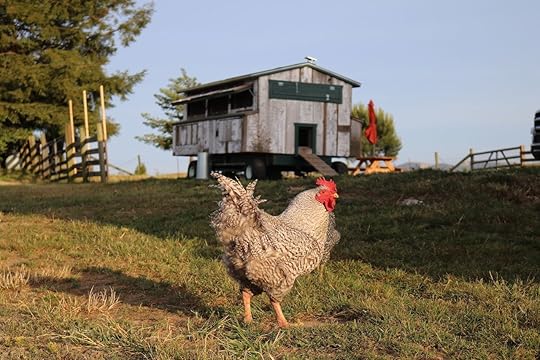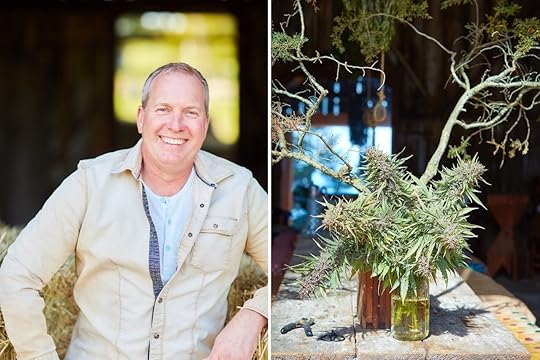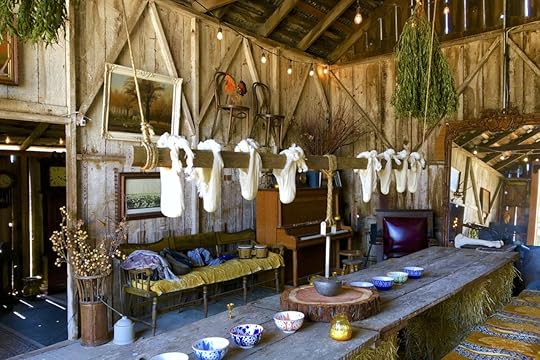Matador Network's Blog, page 863
May 7, 2020
Tiger King zoo in Oklahoma reopens

There’s something ironic about Joe Exotic’s zoo opening to the public right now. The show that kept everyone entertained during the lockdown is now indirectly responsible for bringing together hordes of tourists, and potentially leading to more infections. Tiger King Park, the exotic animal zoo featured on Netflix’s mega-popular Tiger King series, reopened this weekend in Wynnewood, Oklahoma.
The park, previously owned by Joe Exotic, was allowed to open following a weeks-long closure, as long as workers and visitors adhered to the CDC’s sanitation and social distancing protocols. But photos and videos taken at the park, shared by TMZ, show a different reality.
Visitors do not appear to be wearing masks or staying six feet apart, and workers themselves also didn’t seem to be taking the rules very seriously. Head zookeeper Erik Cowie and the new owner, Jeff Lowe, are shown in pictures standing very close to park visitors.
The flagrant disregard for social distancing rules being violated isn’t the only thing disappointing about the reopening. Despite the documentary series shedding light on the mistreatment of tigers in exotic zoos like these, tourists do not seem to care. So if you were still hoping Tiger King would have a Blackfish effect on tigers, it appears the doc focusing on the colorful characters instead of the plight of the animals did little to deter crowds from visiting these zoos. In fact, there could be an uptick in visitors.
Worst yet, we know that coronavirus can be transmitted to tigers. At least seven big cats have tested positive at the Bronx Zoo. So not only are the tigers being exploited, but now they’re also at further risk for contracting coronavirus from the crowds. 

More like this: How to make sure your animal encounter is ethical
The post Joe Exotic’s old zoo from ‘Tiger King’ just reopened to massive crowds appeared first on Matador Network.
Progressive transgender rights

In 1973, transgender activist Sylvia Rivera took center stage at a gay pride rally in New York City while a dismayed crowd hissed in her direction. “I have been beaten, I have had my nose broken, I have been thrown in jail,” she shouted at the audience of hecklers. “I have lost my job, I have lost my apartment for gay liberation, and you all treat me this way?”
Although trans activists like Rivera played a pivotal role in the 1969 Stonewall Riots that spawned the modern LGBTQ rights movement, the trans community was largely left behind as gay people fought for equality in the 20th and early 21st centuries. While 28 countries around the world have since passed marriage equality laws, trans people in most of those countries still face the same issues Rivera endured in the 1970s — employment and housing discrimination, exclusion from health care, barriers to legal identification, and struggles with poverty and violence.
As we approach Pride month this June, let’s heed the words of Rivera’s contemporary trans activist, Marsha P. Johnson — “As long as gay people don’t have their rights all across America, there’s no reason for celebration.” The same sentiment is applicable on a global scale. Until governments around the world learn that trans rights are human rights and enact laws that reflect this unalienable truth, the battle for equality is far from over.
Rivera, who died in 2002, is no longer here to fight for this future. Still, her legacy lives on in the actions of politicians like Georgina Beyer, actresses like Laverne Cox, and organizations like the National Center for Transgender Equality. Most importantly, a handful of progressive countries across the globe are taking the injustices Rivera rallied against in 1973 and turning them into protections for transgender communities. It’s time the rest of the world followed their lead.
Here’s what we can all learn from countries that are turning Sylvia Rivera’s cries for equality into legislation.
1. Trans and non-binary individuals should have the freedom to identify as they choose on legal documents.
When individuals attempt to change their legal identification records to reflect their gender expression, they’re often caught in belittling medical or legal battles. In some US states, trans people must obtain a court order, a doctor’s letter, or have proof of surgery to alter things like birth certificates. In Japan, trans people must undergo sterilization before they can amend official documents. Hungary is currently moving to ban trans people from legally changing their gender entirely.
These discriminatory practices incorrectly pathologize trans identities and result in severe mental-health consequences. The Lancet Public Health Journal published a study this year that surveyed over 22,000 trans Americans and found that people whose IDs were updated to match their gender are less likely to experience mental-health issues than those without gender-affirming legal identification. Removing medical and administrative barriers from accessing these documents is a small step nearly a dozen countries have taken towards trans equality.
In Malta, the Gender Identity, Gender Expression, and Sex Characteristics Act, passed in 2015, protects a person’s right to identify as their “internal and individual experience of gender,” without government interference. There are no judicial or surgical requirements that deny trans individuals the ability to obtain legal identification that matches their gender expression.
Scandinavian countries — along with Argentina, Belgium, Colombia, Ireland, and Uruguay — lead the way when it comes to legal identification, too. The Danish Parliament began allowing self-determined gender recognition among adults without medical intervention in 2014. In 2016, Norway started allowing autonomous legal gender recognition for people between 16 and 18, and children between six and 16 can legally change their gender with parental guidance. The following year, Sweden announced it would compensate around 800 transgender people who were forced to undergo sex-reassignment surgery to change their gender identity legally. Each individual received around 225,000 Swedish krona (approximately $26,000).
It should be no surprise that all three Scandi nations were named some of the happiest countries in the world by the World Happiness Report this year. By embracing equality and attempting to correct past injustices, Scandinavia is the gold standard when it comes to fairness and justice.
But problems with legal identification linger when official documents exclude options for queer people who don’t identify within the male and female gender binary. Progressive countries like Canada, India, and New Zealand solve this issue by offering an “X” in addition to the “M” and “F” options on IDs. Although adding an “X” may seem inconsequential to some, for gender-nonconforming individuals, it’s a revolutionary form of visibility that needs to be adopted worldwide.
2. Non-discrimination laws must be introduced to protect transgender communities.
Widespread discrimination against LGBTQ individuals often goes unchecked by federal authorities, leaving transgender individuals susceptible to disadvantages in work and at home. Bolivia, Ecuador, Fiji, Malta, and the United Kingdom are some of the only countries whose constitutions guarantee equal rights regardless of gender identity. Trans people in other nations can be legally fired, not hired, or denied housing and medical attention based on their gender identity alone.
In the United States, one in five transgender people has faced discrimination when seeking a home, and more than one in 10 has been evicted from their home because of their gender expression. A study conducted by the social-science company CivicScience found the unemployment rate for trans workers was twice that of cisgender people. The data may be inconclusive, however, because CivicScience only tested a small sample of the population.
The United States government has the resources to collect this sort of data on trans communities but decided to exclude gender identity from the 2020 US Census. This exclusion leads to a discriminatory trickle-down effect. Without proper data, it’s difficult to assess the scope of issues faced by trans communities and challenging to lobby for federal funding to support them. By disregarding gender identity, governments like the US give a tacit thumbs-up to ongoing injustices.
3. Gender-affirming medical support needs to be accessible for all.
Gender affirmation surgery, which changes a person’s physical appearance and sexual characteristics to match their gender, has the potential to be lifesaving. A survey of trans people in the UK found that only three percent of respondents who completed gender affirmation surgery contemplated suicide, compared with 67 percent of those in transition. In 2019, researchers at the Yale School of Public Health found that gender affirmation surgery reduces anxiety, depression, and suicidal thoughts among those who seek it out.
When it comes to providing healthcare for trans communities, Argentina is one of the few countries that makes it accessible. In 2012, the country’s Senate approved the Gender Identity Law, making gender affirmation surgery and hormone therapy a legal right included in both public and private healthcare plans.
For countries without liberal healthcare laws, the barriers to gender affirmation surgery are difficult to overcome. In the United States, surgery can cost upwards of $100,000 and isn’t always covered by insurance providers. Few surgeons specialize in procedures like phalloplasty or vaginoplasty (the construction of a penis or vagina), and waitlists for experienced doctors can be years long.
The denial or inability to access gender-affirming care can increase mental health issues, the possibility of suicide, and propel trans people to seek out risky alternative medicines that may have negative long-term consequences. The failure to recognize the necessity of transitional surgeries is a failure to understand the emotional and physical implications these procedures have on trans individuals.
4. Governments must create platforms for trans visibility.
The loudest crusaders for trans visibility are often celebrities brave enough to share their stories publicly. Be it Carmen Carrera or Kim Petras, these icons give cis people the ability to empathize with transgender folks by humanizing a foreign concept. But trans people represent a diverse cross-section of society that isn’t always celebrated in mainstream media. That’s why political action is necessary to create visibility that extends beyond star power.
In 2021, Canada will give voice to a once-invisible population by adding a third gender option to its census. By taking a comprehensive snapshot of gender identity, Canada will be better suited to serve the needs of its trans and nonbinary citizens. This adjustment is an added bonus for queer Canadians — the government already set aside $6.7 million to create the Centre for Gender, Diversity and Inclusion Statistics to identify issues faced by disenfranchised trans communities and adequately address them.
This radical visibility is the kind of inclusion necessary in all countries if governments want to understand how to help their trans and nonbinary populations rise above the pains caused by centuries of systemic discrimination.
Government assistance aside, it’s essential for activists to follow in Sylvia Rivera’s footsteps and find visibility themselves, to come out to their communities, wave flags down parade routes, and create platforms where their voices reach a wider audience. But it takes more than a person standing on stage shouting for equality to win equal rights for trans people — it takes a government willing to enact equal-rights legislation. Until every country in the world creates these legal protections, there’s no reason to stop shouting. 

More like this: #TravelingWhileTrans: How to stay safe while seeing the world
The post What we can learn from countries with progressive transgender rights appeared first on Matador Network.
Greece may open to tourists in July

International holidays might sound like an ill-advised idea right now, but come July, the world could look very different. While many countries are suggesting their borders will remain closed for at least another few months, Greece is giving eager international travelers some hope. The Mediterranean country, which enforced a strict and early lockdown, is considered a coronavirus success story, limiting deaths to around 150. This week Greek businesses are starting to reopen, and if all goes according to plan, the prime minister hopes to welcome tourists as soon as July 1.
Kyriakos Mitsotakis, Greece’s prime minister, told CNN, “The tourism experience may be slightly different from what you’ve had in previous years. Maybe no bars may be open, or no tight crowds, but you can still get a fantastic experience in Greece — provided that the global epidemic is on a downward path.”
Although opening the country to tourists inevitably comes with risk, Mitsotakis hopes that extensive testing measures could limit any potential outbreak. Currently, all international travelers must complete a personal health and information form prior to landing. At the Athens airport, travelers have their throats swabbed, and test results for COVID-19 are processed within 12 hours.
If similar precautions are introduced at departure airports, Kyriakos Mitsotakis explains that Greece will feel much more comfortable safer opening up to tourism. 

More like this: 10 unspoiled Greek islands that won’t stay that way for long, according to search data
The post Greece hopes to reopen to tourists as early as July 1 appeared first on Matador Network.
Andy Serkis to read LOTR for charity

Andy Serkis is forever associated with Gollum, the creature he portrayed (through CGI) in The Lord of the Rings and The Hobbit films. Now, he’s using this connection and his talent for voice acting to narrate The Hobbit for charity. For 12 hours, Serkis will give a continuous live reading of the popular Tolkien book to raise money for NHS Charities Together and Best Beginnings.
“So many of us are struggling in isolation during the lockdown. While times are tough, I want to take you on one of the greatest fantasy adventures ever written, a 12 hour armchair marathon across Middle Earth whilst raising money for two amazing charities which are doing extraordinary work right now to help those most in need in the UK,” Serkis said on the GoFundMe campaign he set up.
Serkis is an ambassador for Best Beginning, whose mission is to support babies, toddlers, and pregnant families and new parents to prevent inequality. NHS Charities Together is the UK National Health Service’s umbrella organization.
The live reading will begin at 5:00 AM Eastern Time/2:00 AM Pacific Time on Friday, but since it’s slated to last around 12 hours, there’s no pressure to wake up at the crack of dawn. The link will be posted on the GoFundMe campaign page, and those who watch the stream are being asked to donate what they can, with the ultimate aim of raising $123,000. 

More like this: Amazon’s ‘Lord of the Rings’ TV series will be filmed in New Zealand
The post Andy Serkis will read ‘The Hobbit’ for 12 hours straight to raise money for charity appeared first on Matador Network.
London’s new skyscraper: The Scalpel

The London skyline is like a plastic surgery patient that just can’t decide what procedure it wants. After The Gherkin, The Shard, and The Cheese Grater, it hung its hopes on the Tulip building — a flower-shaped design ultimately rejected by the mayor for being an eyesore — and now there’s an edgy new skyscraper in town: The Scalpel. Sitting among the City of London’s skyscraper cluster, The Scalpel, designed by Architecture Studio Kohn Pedersen Fox (KPF), is a 623-foot-tall, 38-story building whose name is inspired by its angular shape.

Photo: Donatas Dabravolskas/Shutterstock
The architect said the Scalpel, which sits at 52 Lime Street, was designed with the aim of adding a sense of drama to London’s skyscraper cluster and to mirror the form of 122 Leadenhall, also known as The Cheese Grater.
The shape of The Scalpel is not only aesthetically pleasing, but its inclined facade is also meant to preserve the views of St. Paul’s Cathedral from Fleet Street.
Although only the seventh-highest building in London — a ranking subject to change as fast as the skyline itself — it is definitely the sharpest of them all.

Photo: LondonSkyline/Shutterstock
Unlike other towers, which typically maintain their official names, this new skyscraper will adopt The Scalpel nickname officially.
William Pedersen, the co-founder of KPF, approved the building’s name. “I love it,” he said to Dezeen. “Cutting-edge … who wouldn’t want that?” 

More like this: Baku, Azerbaijan, has the most cutting-edge architecture in the world
The post The London skyline has a new skyscraper, and it does not look ridiculous appeared first on Matador Network.
Thai sanctuaries send elephants home

Thailand’s sudden drop in tourism due to the coronavirus pandemic has caused devastation in the country’s service sector — including its elephant tourism sector. Without travelers paying to visit elephants in the Southeast Asian country, the sanctuaries and camps where they lived close to tourism-dependent cities like Chiang Mai simply can’t afford to feed or house them anymore. As a result, more than 100 of the animals have been sent on a 93-mile jaunt home to the Mae Chaem District in rural northern Thailand, their natural homeland.
Elephants can eat more than 660 pounds of food per day. London-based World Animal Protection estimates that nearly 2,000 elephants are at risk of starvation because ownership at the sanctuaries where they live can’t afford to feed them.
The relocation of the animals is good news for the elephants, according to the Chiang Mai-based Save Elephant Foundation. The organization has been promoting the elephants’ return to their home at this time and has been raising money for struggling elephant owners.
Sadudee Sarichevee, who had worked with the organization to set up a small elephant farm for tourists to visit, decided to take his elephants back home. He and other local sanctuary owners marched a total of 11 elephants back to Mae Chaem from Chiang Mai.
“These elephants have not had a chance to return home for 20 years. They seem to be very happy when arriving home, they make their happy noises, they run to the creek near the village and have fun along with our children,” said Sarichevee, who owns four elephants himself, to The Associated Press. 

More like this: How this major tour company changed the elephant riding industry forever
The post In Thailand, out-of-work sanctuary elephants walk back to their natural habitats appeared first on Matador Network.
Sonoma wine country craft cannabis

You know cannabis has officially gone bougie when wine country gets involved.
A plant once banished to hidden grow houses in suspect parts of town is now flourishing in the sunny hills of California’s Petaluma Gap. Much like it has for food and wine, the valley’s terroir creates ideal conditions for finely cultivated cannabis, the kind of stuff people will travel here to enjoy with gourmet food and boutique wine.
That’s the hope, anyway, at Sonoma Hills, California wine country’s first premium craft cannabis farm, where standing among the rows of crops you’ll find the gardener once tasked with growing the vegetables for the venerable French Laundry.
Aaron Keefer, who spent his youth gaining an appreciation for plants and his adult life cultivating their flavors, is now the man wine country looks to to deliver a product once shrouded in mainstream stigma. He’s a brilliant combination of California curiosity and western New York work ethic, with just enough fearlessness to convince wine tourists he has cannabis worth traveling for.
Cultivating cannabis like a gourmet vegetable

Photo: Sonoma Hills Farm
“Would you rather have your marijuana grown in an LA warehouse or out in a beautiful environment like this?” Keefer asks rhetorically from Sonoma Hills’ 37 acres of Northern California paradise. He has become well acquainted with these hills over the past couple of decades, where he honed his growing skills as the head culinary gardener for Thomas Keller’s French Laundry, as well as other Keller Group restaurants.
He spent years experimenting and cultivating ingredients for some of the best restaurants in the world, and says cannabis is no different.
“Marijuana, there’s nothing unusual about that plant,” he says. “Truthfully it’s really just like vegetables. It’s all about genetics, then the soil that can help that plant reach its genetic potential, and then how you harvest it. You only get those nuances and the depth of flavor by building the soil … and that’s where you get the terroir. It’s like wine with all the little things going on.”
Comparing cannabis to wine was the sort of conversation you really only had after consuming a good amount of both a decade ago. But as laws change and cannabis moves into the mainstream, experts like Keefer are taking it as seriously as any agricultural product.
Keefer’s almost unrelenting appreciation for nature and soil came from a childhood spent growing up on a farm in Ovid, New York, not far from Ithaca. Both of his grandfathers were farmers, and Keefer whiled away his afternoons hunting and fishing and coming home to farm-fresh meals.
“I think we had like three channels on TV, so I’d just grab my gun and go wander through nature and observe how it worked together through the season,” he reminisces.
“My one grandfather had a berry farm, and I got to understand how the sun warmed a raspberry, and what it tastes like early in the morning when the dew is still out, and it’s full of water, and the flavor is not really sweet. Then later on in the afternoon, it was just at its peak when the sun warmed it, which is wonderful, but that’s not when you would pick it because it has no shelf life at that point in time. So just understanding those little nuances, growing up out in nature allowed me to observe.”
He fell into restaurant work after being asked to fill in for a line cook who called in sick at a local fine-dining restaurant. A degree from the Culinary Institute of America followed, and over the next decade, he worked in Bay Area kitchens alongside names like the award-winning Spanish chef Julian Serrano and Michael Chiarello, a celebrity chef known for Italian-California cuisine.
“From those guys, I learned passion is important, but drive is more important,” he says. “Because plenty of people have passion. You know, everybody, everybody wants to be passionate. But at the end of the day, if you don’t show up every day and put the work in, nothing’s going to happen. You have to be consistent and you have to really push every day.”
Learning the craft of cultivation

Photo: Sonoma Hills Farm
His drive may have led to success in the kitchen, but the frenetic, unpredictable restaurant hours were keeping him away from his children Zachary and Laura. And after one too many missed basketball games, he moved onto another, more idyllic career: growing vegetables for the French Laundry.
There, he developed a reputation as a perpetual student of the craft, who was never afraid to try a new idea but also wanted to learn all he could in the process.
“What separates me is my work ethic, and that I never stop learning,” Keefer says. “I never think that I’m the best at anything, and I will learn from everyone around me.”
To gain that education, he traveled the country to farms like Blue Hill in New York, to Chef’s Garden in Ohio, and Thomas Jefferson’s Monticello in Virginia.
He returned to California armed with a knowledge that afforded him a fearless attitude in the garden. One that led to growing plants people could only try at French Laundry, and he became a major factor in the restaurant’s success.
“He’s not afraid to fail,” says Kaelin Trilling Ulrich, chef de cuisine at La Calenda, Keller’s Oaxacan concept in Yountville, California. “He says he’s not afraid of going into the unknown, he’s willing to just do it, just go for it. He’ll say, ‘I’m not sure what the flavor profile is going to be, or how we’re going to use it,’ but he’s still very confident.”
Some might say it borders on overconfidence if he wasn’t always so successful. When Keller was opening La Calenda, Keefer visited Ulrich’s family in Oaxaca to learn how they grew local ingredients. While there, he acquired seeds for the hard-to-find chile de agua and smuggled them back into the United States. Though it took some trial and error, he ultimately began growing the locally rare chilies in the French Laundry garden, much to the confusion and envy of other local restaurants.
“We had so many of these peppers, people were asking, ‘Where are you getting them from, who is shipping them to you?” Ulrich recalls. “He grew like 400 plants; we got so much pepper. We fermented, pickled. Some we stored. It’s a flavor we couldn’t get here before, and for people to enjoy flavors like this, it’s very important. It’s very gratifying.”
Balancing fatherhood and cannabis

Photo: Sonoma Hills Farm
Not to label Keefer as a scofflaw, but his confident fearlessness is a huge part of why he’s well equipped to handle turning cannabis into a craft product. He understands risk but also how to destigmatize cannabis to a sometimes wary audience.
It was a skill he put to use when explaining to his kids that their father was taking a job growing marijuana.
“It’s something you’ve protected them from when they were younger,” he says. “Because who knows what they’d say at school, or how they’d be judged by the administration, or teachers, or even students.”
But broaching the subject with his children, who are now 18 and 14, was actually surprisingly easy for Keefer.
“As we got close to it, I talked to them about taking this next job [at Sonoma Hills], and they just kinda shrugged and were like, ‘Ok, dad. You’re still a dork.’”
Keefer said it was also essential he educate his children on marijuana’s effect on developing brains.
“I was honest with them about what drugs did, but that it’s their choice at the end of the day,” he says. “I look at it as the newest legal intoxicant, so maybe later on in life they will partake, but as of now they don’t.”
Keefer’s teenage cannabis experience was a little different but also laid the foundation for his latest career. He grew his first cannabis plant at age 15 when a friend’s father returned from Amsterdam with some seeds. He also wrote a lengthy research paper in 10th grade about how the war on drugs was the largest civil rights issue of our time.
“It’s always been like a little side hobby, just something I played around with,” he says. “But eventually it became something that I love to do.”
Creating the world’s first mari-winery

Photo: Sonoma Hills Farm
Already, Keefer has brought that love — as well as his fearlessness, process, and drive — to creating craft cannabis at Sonoma Hills. He envisions cannabis as a natural product like tobacco — something to be enjoyed before a fine meal in the great outdoors.
“I don’t think strength is the biggest thing,” he says. “When people open up a bag, the first thing they do smell the product, and if it doesn’t have a really, really punching, heady smell, you know, they don’t really go for it. So we need to look at the flavor. It’s just like vegetables, you want to get those nuances and the depth of flavor.”
His goal with Sonoma Hills is to use those flavors as part of what Keefer calls a “mari-winery,” where people can come and enjoy food, wine, and cannabis all grown from the same land. Of course, cannabis tourism isn’t currently sanctioned by the State of California, so that dream is on hold. But with cattle, chickens, vegetables, and even a pregnant pig at Sonoma Hills, it’s ready once tourism is permitted.
“I don’t know any county that wants to turn their nose up at tax revenue,” he says. “We have roadblocks in the way that will be falling down as these old ideas kind of fade away. And I do believe that eventually we will be able to have events up here and have parties. We’re lucky to have an amazing group of people, and we’re going to create this product as a great group. We’re going to produce great marijuana. And we will rock people.” 

More like this: Cannabis regions should get the same recognition as wine regions. Here’s why.
The post This former French Laundry gardener is bringing craft cannabis to wine country appeared first on Matador Network.
History of LA's downtown streets

The most memorable things we come across when we travel often took a long, winding path to get to what they are today. This is Origin Story, a series that looks into the various influences that made the cultural touchstones and local quirks that we know today.
If you drive west from Downtown Los Angeles for long enough, you’ll be faced with a decision: Do you want to make a turn at a 45-degree angle or a turn at a 135-degree angle? The majority of the time that decision has to be made on Hoover Street, which delineates the northwest- and southwest-oriented streets of old Spanish LA and the north-, south-, east-, and west-oriented streets of modern LA.
Glancing at the intersecting lines on a map (or, more likely, Google Maps), you might think to yourself that something funny is going on. There’s actually a very good reason for the layout, though, and it all goes back to the first Spanish colonies on the west coast of what is now the United States.
In 1573, King Phillip II of Spain created the Council of the Indies to regulate its new territories. By 1680, the council’s rules were codified as the Laws of the Indies. Spain was one of the first major European powers to colonize the Americas, and the rules were meant to dictate how, exactly, that colonization was to be done. It covered just about everything and was regularly updated. One of the later versions dictated the layout of Los Angeles when the now-sprawling city was officially established in 1781.

Photo: ShustrikS/Shutterstock
The Laws of the Indies dictated that cities be 20 miles from sea, near a freshwater source, and close to a Native American tribe. The site for LA is around 30 miles from sea, has the once-thriving LA River nearby, and was at one point nearby to the Tongva village. Hence the location. The law also dictated that each street be laid at a 45-degree angle from the center plaza of each settlement to create wind tunnels and shed somewhat equal light on each building (not to mention throw more shade on the streets compared to the east-west oriented streets that were in line with the sun’s rise and set).
The first LA layout was completed by four soldiers and 44 civilians, 22 of whom were children, according to a historical analysis published by the city’s planning commission. Due to the overflowing river at the time (long before it was lined with concrete), the center of the city was moved three times over the first half-century of LA’s existence. The streets followed the flow of the river, forcing them to align at 36 degrees rather than 45, which was apparently deemed close enough. The river also forced some irregularities with each move of the city center because city planners had to work around the existing farms with each adjustment.
The city’s historical analysis notes that, when all movement of the location of the city center was said and done in 1822, “it failed to measure up to the neatness envisioned by the Laws of the Indies.” Still, for the average eye at the time, it worked.
This orientation was in stark contrast to the Dutch and English colonial towns of the same era, James Rojas told KCET when he was LA’s city planner in 2012. Rojas told the station that what is now Long Beach would have been a better strategic location because it had two rivers, more resources, and was closer to Native American populations.
Yet it was the Spanish who decided the layout of what would become many of the modern cities of South America and western and southern North America. And thanks to the Spanish, Los Angeles has its irregular streets. 

More like this: The best cannabis activities in Los Angeles
The post Why the streets of Los Angeles seem to make no sense appeared first on Matador Network.
May 6, 2020
Llama COVID-19 antibody
Petting zoo animals have been instrumental in providing much-needed companionship for nursing home residents during the coronavirus lockdown, but new research suggests they could also help cure the virus itself. Through studying a llama named Winter, scientists from Belgium’s VIB-UGent center for medical biotechnology and the University of Texas at Austin discovered a small particle that appears to block the coronavirus.
The scientists, who published their research in the Cell journal, began looking into antibodies to combat the SARS virus four years ago. Winter was given safe versions of both SARS and MERS before blood was drawn. The research team then identified fragments of antibodies to study which ones bound most strongly to the SARS virus. Apparently, members of the camel family — like llamas and alpacas — produce two types of antibodies to detect bacteria antivirus. One is very similar to human antibodies while the other is smaller and easier for scientists to work with. Research showed that these smaller antibodies, called nanobodies, had the ability to bind to the SARS spikes, and block the virus from infecting cells.
Xavier Saelens, joint leader of the Belgian side of the research partnership, said, “The work was a side project in 2016. We thought maybe this was interesting. Then the new virus came and it became potentially more crucial, more important.”
Since the coronavirus is a cousin of the SARS virus, the same antibodies are believed to be equally effective against COVID-19.
In an encouraging statement, Jason McLellan, associate professor of molecular biosciences at UT Austin, said, “This is one of the first antibodies known to neutralize SARS-CoV-2.”
The team will soon begin testing on animals, with the aim of starting human trials by the end of the year. 

More like this: Where to see all of the internet’s favorite animals in real life
The post The first antibody that blocks COVID-19 may have just been found in a llama named Winter appeared first on Matador Network.
Banksy piece at Southampton hospital

A new piece of Banksy artwork appeared — somewhat mysteriously, as always — outside the Southampton General Hospital in Southampton, England.
The painting, in black and white, depicts a young boy kneeling next to a basket in which he has seemingly discarded Spiderman and Batman action figures. Instead, the boy is playing with an action figure of an NHS nurse, who is striking a Superman-esque pose. The nurse is wearing a facemask, cape, and an apron with the Red Cross symbol where Superman’s shield would otherwise be.
Along with the three-square-foot painting, the artist left a note for hospital workers that read, “Thanks for all you’re doing. Hope this brightens the place up a bit, even if it’s only black and white.”
View this post on InstagramA post shared by Banksy (@banksy) on May 6, 2020 at 9:50am PDT
The hospital will display the painting in a foyer near the emergency department, and then auction it off in the fall to raise money for the National Health Service (NHS).
Hospital staff, of course, were grateful for the unexpected gift.
“Our hospital family has been directly impacted with the tragic loss of much loved and respected members of staff and friends,” said Paula Head, CEO of the University Hospital Southampton NHS Foundation Trust. “The fact that Banksy has chosen us to recognise the outstanding contribution everyone in and with the NHS is making, in unprecedented times, is a huge honour.”
She added, “It will no doubt also be a massive boost to morale for everyone who works and is cared for at our hospital.” 

More like this: Street art thanking healthcare workers is popping up all over the UK
The post A Banksy painting honoring the work of nurses just appeared at a hospital in England appeared first on Matador Network.
Matador Network's Blog
- Matador Network's profile
- 6 followers



